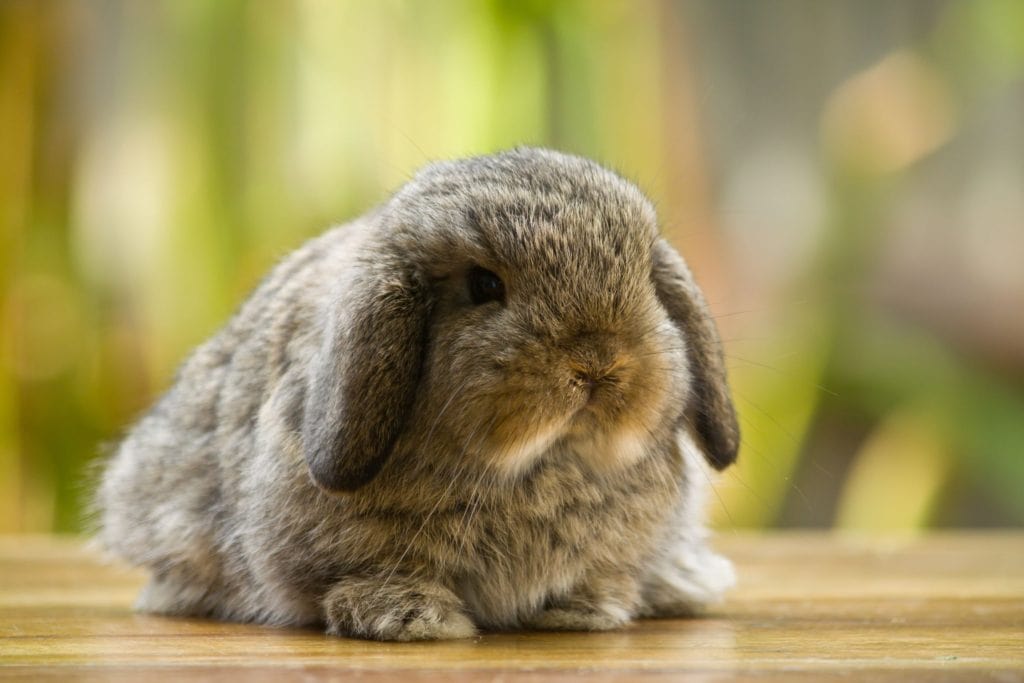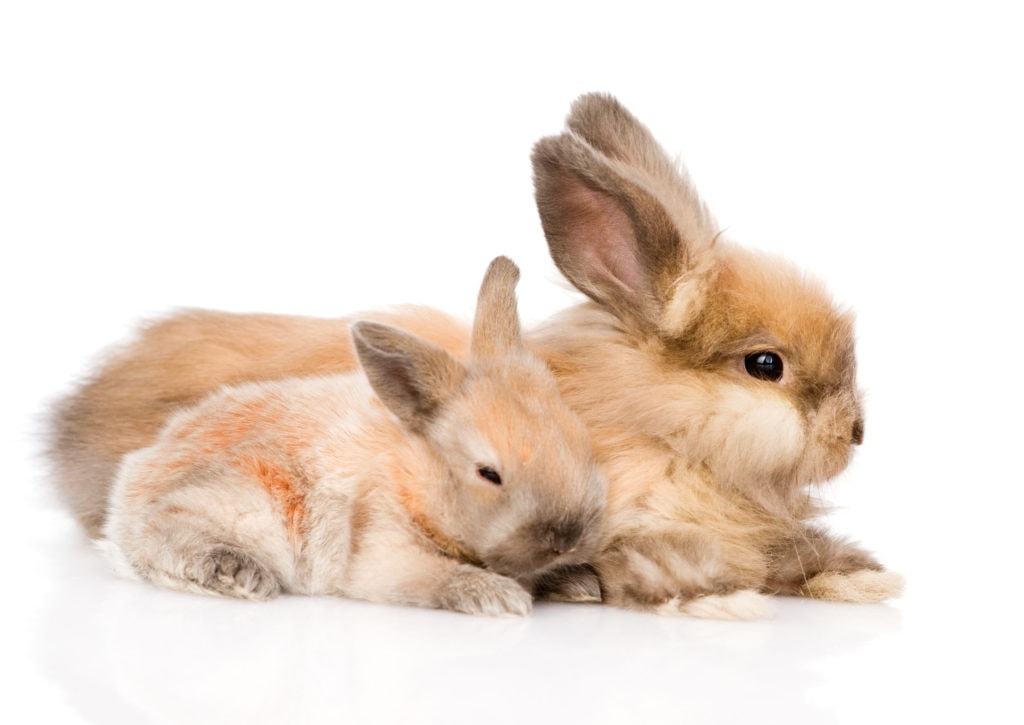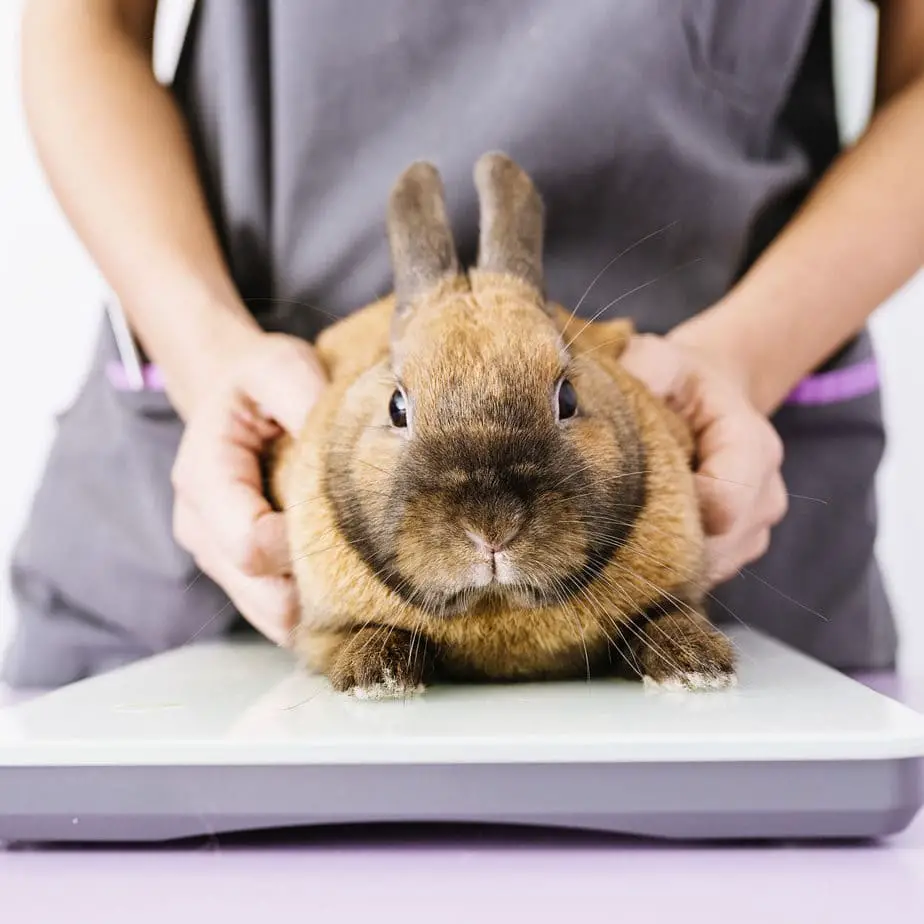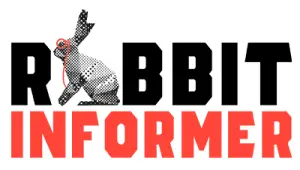
You may be wondering just how big your rabbit will get once it reaches adulthood. There are many different types of rabbits and sizes they could potentially be once fully grown.
The average size of a full-grown pet rabbit is 16 inches (40 cm) and they can weigh between 2-4 pounds (1.2- 2 kg). Male and female rabbits grow to be about the same size as one another.
Because there are dozens of different types of rabbits and varying sizes that they can grow into, there’s so much to learn and know.
Average Pet Rabbit Sizes
Your rabbit is the ideal size if its hip bones, ribs, and spine are easily felt, but also rounded and not sharp. Its ribs should almost feel like a pocket full of pens. Make sure that there’s no abdominal bulge, and that its rump area is flat. If your rabbit feels like it’s a different shape than this, your pet might be at risk and you may want to seek advice about your rabbit’s weight.
There are over 50 types of rabbit breeds. The most common rabbit breed is the french lop. There are many different sizes your rabbit could grow to be. We are going to go over the most common types of pet rabbits and their average sizes.
| Breed | Length | Weight |
|---|---|---|
| Holland Lop | 10-12 inches | 4 pounds |
| Flemish Giant Rabbit | 2.5 feet | 15 pounds |
| Rex Rabbit | 12 inches | 9 pounds |
| French Lop | 1.5 feet | 12 pounds |
| Mini Lop | 11-12 inches | 5.5 pounds |
| English Lop | 1.2-1.6 feet | 10 pounds |
| Havana Rabbit | 12 inches | 5.5 pounds |
| Harlequin Rabbit | 12 inches | 7-9 pounds |
| Polish Rabbit | 9-10 inches | 3 pounds |
It’s important to understand how big a rabbit can get before deciding to take care of one and bring it home. As you can see, there are many different types of rabbits, and all of their sizes differ greatly.
There is no typical healthy weight or size for a rabbit to be since there are so many different types of rabbits. As long as your rabbit has a good appetite for the food you give it and enjoys being active, your bunny is perfectly healthy. If you’re concerned about your rabbit’s size or weight, don’t hesitate to get it checked out by a vet.
Your rabbit can become overweight if it doesn’t receive the right amount of exercise and is exposed to too much food. If it is difficult to feel your rabbit’s ribs, there is a chance that your rabbit is overweight. Make sure to let your rabbit roam around your home as much as possible to make sure that it is getting enough exercise.
No matter how big your rabbit gets, he or she will always be cute and cuddly! Check out the 25 Reasons Why Bunnies Are So Cute – From Nose to Tail! here.
Rabbit Behavior When Growing
0-3 months- At this time, a rabbit will typically weigh about 5 ounces. They are completely dependent on their mother and their eyes start to open at around 10 days. They start to move around and once they’ve learned how to walk a little more, they are very lively and playful. Baby rabbits should be kept with their mother until they are at least 6 weeks old.
3-6 months- Rabbits may become more aggressive at this time, which can lead to lots of owners deciding to give them away. Know that aggression is normal at this stage in your rabbit’s life. They start to become very territorial of their personal space and may growl at you if you invade it.

6 months-1 year- Rabbits tend to exercise and move around less at this time. They begin to put on weight easier. Make sure to limit their daily food intake to avoid potential health problems. Your rabbit may be a little moody and less willing to socialize. Be patient with your rabbit, they will grow out of this stage.
1-3 years- This will probably be the most active phase of your rabbit’s life. Rabbits in this phase require lots of exercise and enjoy being outdoors. Sometimes they might even binky. Binkying is when a rabbit jumps in the air and twists. They may dig up your yard a bit, but to avoid this, make sure to give them lots of attention. You can also consider offering them toys or treats.
Rabbit Behavior When Fully Grown
3-5 years- When a rabbit reaches this age, they tend to slow down a little bit. They may sleep a lot and may become more affectionate. They feel completely safe in your home because they have built trust in you. You will most likely find your rabbit lying around your house and flopping. Flopping is when a rabbit lays on its side. If your rabbit does this, it is very relaxed and happy.
5-7 years- A greater level of care may be required for your rabbit in this stage of your rabbit’s life. Health concerns may come into play even when your rabbit is taken great care of. Regular checkups are important when caring for your rabbit’s health.
7-9 years- There is a chance that your rabbit may still be active in this stage, but most of the time, your rabbit enjoys just laying around the house. Many rabbits deal with health issues in this stage of life and might need more attention from a vet. If your rabbits live to this age, they have developed a strong trust in you.
Checking on Your Rabbit’s Health
We want to make sure that your rabbit grows to be as healthy as possible and to the size, it’s supposed to be. Here are some things to check for in your rabbit’s health.
Ears- Check your rabbit’s ears and make sure that there is no wax or dirt buildup. If you see a dark crusty material in your rabbit’s ears, that could be ear mites and your rabbit will need treatment from a veterinarian. Their ears may need general cleaning. You can use saline solution with a cotton pad and gently wipe out your rabbit’s ears.
Teeth- Your rabbit’s upper teeth should always align with its bottom teeth with a slight overbite. Your rabbit’s teeth are maloccluded if the top teeth are too long and growing over the bottom teeth. If your rabbit’s teeth are maloccluded, your rabbit will have a hard time eating food which could potentially lead to significant health problems.
Eyes- When your rabbit’s eyes are healthy, they are clear and bright. You can pull up the eyelid and check to see if the eye tissue is pink. If the eye tissue is pink, that is a good sign. If the eye tissue is red or pale, that is a sign of illness or infection. Rabbits also have a clear membrane covering their eye, known as a third eyelid. If this membrane becomes prominent, that means that your rabbit is stressed.
Fur and Skin- If your rabbit’s fur is soft and shiny, that is a good indicator that your rabbit is healthy. You can try running your hands through your rabbit’s fur and check for and fleas or fur mites. Mites lead to white scabs and flaky skin, so those are things to check for. Make sure to also check for any lumps or bumps on your rabbit’s skin.
TIP: Some people choose to have their pet rabbit vaccinated, and it is certainly recommended to do if you live in certain countries. See this important health-related article about Do Rabbits Need Vaccines here.
Keeping Your Rabbit Healthy
Now that you know the things to look for in a healthy rabbit, here are some things you can do to ensure that your rabbit stays healthy, and lives as long as possible.

Neutering- Make sure to take your rabbit to the vet to be neutered so that it can avoid any potential harm or health problems. UN-neutered females are at high risk for developing womb cancer, while UN-neutered males are more likely to fight. This could cause your rabbit serious harm.
Diet- A rabbit’s diet is vital when trying to ensure its health. Hay and grass are extremely recommended to give to your pet rabbit. Hay and grass can help prevent dental and gut disease. If your rabbit’s eating habits drastically change in a short period of time, and the number of its droppings reduce, that’s a sign that your rabbit is very ill, and should receive attention from a vet.
Exercise- Make sure that your rabbit receives plenty of activity every day. If your rabbit doesn’t get enough exercise that can cause it to develop a condition called GI Statis. Make sure that you keep your rabbit close by when it’s running around. You don’t want it to become exposed to potential predators or pesticides that could be on your neighbor’s lawn.
Bunny-proof home- It’s important to bunny-proof your home so your rabbit stays away from anything that could potentially harm it. Something to consider is covering your electric cables with wire covers. You should also make sure that your house plants are out of reach for your rabbit. Your house plants may be toxic to your rabbit. Make sure to also protect the legs on your furniture with plastic corner protectors.
Check-ups- Make sure that your rabbit receives checkups every once in a while so a professional veterinarian can help you keep your rabbit in good shape and ensure its health. If your rabbits show any symptoms of the previously mentioned health warnings, make sure to take your rabbit to a vet as soon as possible. It is best to seek professional help now and then.
